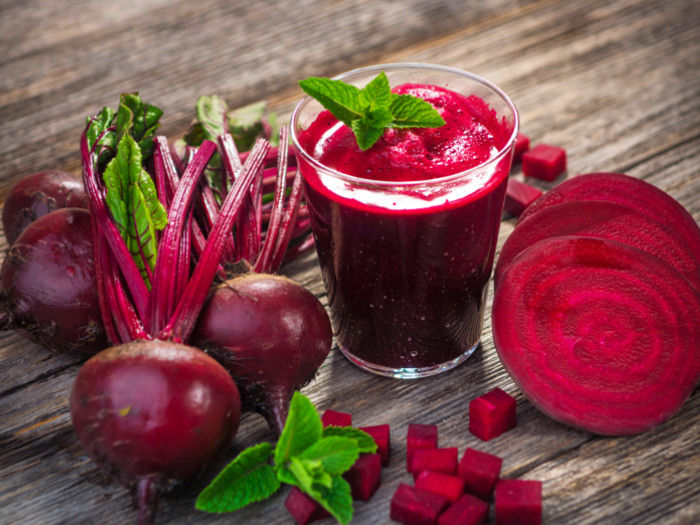How To Make Beet-root Juice(Step by Step)

How To Make Beet-root Juice: Nitrates, which reduce blood pressure, are abundant in fresh beetroot (often referred to as “beets” in North America), in addition to antioxidants and other vital minerals. Want to avoid eating beets every day? Aim to juice them! Learn how to prepare this root vegetable for juicing in the next paragraphs, and then try some delectable recipes that will nearly make you forget you’re drinking something healthy. enough Info

Read Also: Beets and Diabetes (Every Thing You Need to Know)
FAQs & Answers On How To Make Beetroot Juice
1, Can the beets be cooked first?
You can, but it isn’t advised or essential. All the nutrients that would be present in the juice would be destroyed if you cooked them. Also, you’ll receive less juice from them.
2, How much nitrate is in a cup of beet juice?
Eight “units” of nitrate are equal to around half a cup of beet juice.
3, boiling beets remove nitrates?
Nitrate levels drop when vegetables are boiled, and vital vitamins and minerals including thiamine, folate, vitamin B6, vitamin B12, and vitamin C are also diminished.
Making Beets
With a sharp, serrated knife, remove the beets’ top greens and root end
Delete the roots. The greens taste similar to spinach and are packed with calcium and other minerals, so you may save them for your juice if you like. How To Travel To Gambia (Visa free for 90 days)
Use a vegetable brush and lukewarm water to scrub the beets
Beets are a type of root vegetable, hence the skin will be rather soiled. Scrub the dirt off the beets while holding them under running water.
- Another option is to clean the beets after letting them sit in cold water for a little while. The dirt may be made more easily removable by soaking.
You may use a vegetable peeler to remove the beet skins
Beets may be juiced with the skin on for more nutritious value. Yet the earthy flavor is also enhanced by the peel. You can remove the peel if you don’t like that.
- Make two batches, one with and one without the peel, and then taste test if you’re unsure which you prefer.
Using a Juicer
Beets should be chopped up little
Given how brittle beets are compared to other vegetables, you want to make sure the pieces are tiny enough to prevent damage to your juicer. The pieces you cut should be somewhat smaller than the feed funnel on your juicer. How To Immigrate to Canada as a Physician
Read Also: How to Cook Chicken Breast
Feed the feed tube with the beet pieces
Place the pieces into the feed tube of your juicer after setting it up. Never add another piece before the juicer has finished processing the previous one.
To gently push the pieces through the juicer, use the plunger
To give the juicer time to operate, go carefully here. Given how tough beets are, it could take your juicer some time to process them.
It’s a good thing that the pulp you have left is rather dry. If you want to squeeze every last drop of nutrition from your vegetables, it’s fantastic for your compost pile.
Using a Blender
Beets should be quartered
Usually, this size is manageable by a food processor or blender. But bear in mind that your appliance will operate less, the smaller the pieces.
Add your beets and 1/3 cup (79 ml) water to the blender or food processor
The water makes your beet-crushing machine operate more efficiently. Also, it somewhat dilutes your beet juice to lessen its strong flavor.
- You may substitute any beverage for the water; to counteract the earthy flavor of the beets, use fruit juice. How To Get Spray Foam Off Your Hands
The beets should be smooth after being processed at high speed
Normally, this takes 30 to 60 seconds. When there are no more noticeable huge pieces, the process is complete. Despite the fact that it will still be rather thick and pulpy, aim for consistency in texture.
To separate the juice and pulp, pass the purée through a cheesecloth strainer
Cut two pieces of cheesecloth that are 61 cm (24 inches) in length
The two may be folded in half and stacked on top of one another to form four layers. Pour the puree through the cheesecloth into a big basin that has been lined with layers of cheesecloth.
- To create a bag, gather the cheesecloth’s edges and twist them together. Squeeze down to further extract the juice into the bowl after twisting the sides together.
- A nut milk bag or fine mesh sieve are other options that might not be as messy.
Variations in Recipes
Apples and carrots may be juiced to make a naturally sweet beetroot juice
Juice the beets first, then the apples, then the carrots if using a juicer. To make up for some of the fiber you lost when juicing, you may also include around a tablespoon (15 grams) of chia seeds.
- Put all of your veggies in a blender or food processor along with roughly 1/3 cup (79 ml) of water or apple juice.
Ginger, lemon, and cucumber may be combined to make zingy beetroot juice
Lemon and ginger are a traditional pairing, and the addition of cucumber brings a touch of freshness. Add around 1/3 cup (79 ml) of water to the blender or food processor if you’re using one.
- Although you may leave the peel on cucumbers and beets, you should absolutely peel lemons since the peel can be bitter. You should also remove as many seeds as you can.
To the ginger beet juice, add oranges, kale, apples, and carrots
Do you prefer a little spice? This variant may be the right choice for you. The apples and oranges counteract the earthiness of the carrots and beets while the ginger gives this drink a little bite.
- If you’re using a juicer, add the oranges first, followed by the kale, apples, carrots, beets, and ginger. Give your juice a brief toss to combine the flavors completely.
- Pour roughly 1/3 cup (79 ml) of apple juice into a blender or food processor.
Read Also: 100 Romantic Love Messages For Her
Try different combinations of ingredients to create your own special concoction
Like any other vegetable juice, you may experiment with beetroot juice to make your own recipe. The following ingredients pair well with beets:
- sweeteners: agave, maple syrup, stevia, honey, and
- Fruits: lemon, lime, watermelon, apple, and
- Vegetables: lush greens, cucumber, and carrots
- Supplements: chia seeds, ginger, and turmeric
Conclusion
Due to its special mix of vitamins, minerals, and antioxidants, beetroot juice could provide a number of health advantages. The great nutritional profile of beetroots contains a wealth of important vitamins, minerals, and antioxidants. Also, they contain special bioactive substances called betalains that may be advantageous to one’s health. How To Unclog A Double Kitchen Sink
Read Also: How To Know If You’re Depressed :




